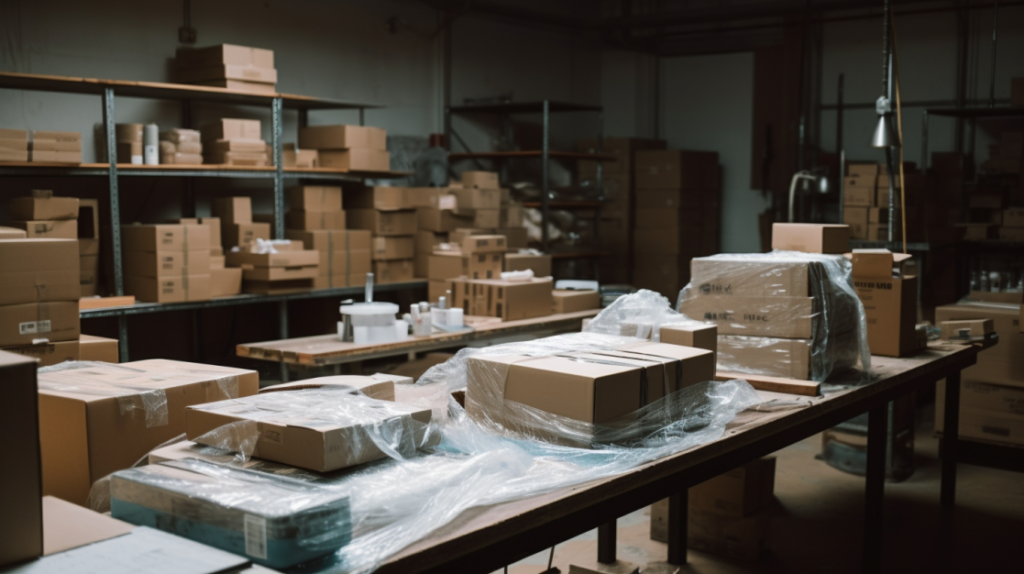
Fast courier shipping is an integral part of any ecommerce business, but do you know the X-factor to lowering your shipping costs? It’s the packaging process.
Striking the balance between robust packaging and shipping costs is like walking a tightrope. Tilt too much in one direction and you’ll face unnecessary costs. Lean too far the other way and risk the integrity of shipped packages.
At Transdirect, we believe smart packaging practices are essential. Why? Because they help protect both your merchandise and your bottom line (thanks to the cheapest shipping quotes).
Why Does the Right Shipping Packaging Matter?
For one thing, adopting good packaging practices helps ensure safety throughout the fulfilment and shipping process.
Plus, the right packaging reinforces your brand image and provides a positive unboxing experience – two keys for building customer loyalty and repeat orders.
With environmental concerns in the spotlight, efficient packaging also contributes to a lower carbon footprint. Like many of your customers, we’re passionate about helping businesses use more sustainable practices. This is why all of our courier services are certified carbon neutral.
5 Money-Saving Tips: How to Cut Shipping Costs in 2023
Let’s look at five ways to streamline your packaging process and reduce shipping costs, to help make your overall operations more profitable and efficient.
1. Choose the Proper Packaging Materials
Selecting just the right packaging material is indeed an art, one that requires a keen understanding of both your product and the demands of the shipping journey.
The suitability of a material changes with the nature of the item: fragility, size, shape, and other physical characteristics make a big difference. Recognising this is where efficient, cost-effective shipping truly begins.
There are myriad packaging materials available, each with its own strengths. While corrugated cardboard boxes are common for many parcel shipments, what’s inside may vary widely.
For instance, bubble wrap is excellent for cushioning delicate items and preventing movement within the box. For lighter items, organically-based materials like shredded paper or cornstarch peanuts can be wise choices, with the added benefit of being eco-friendly packaging.
Sometimes, a combination of packaging materials works best. For heavier items, double-boxing with ample padding in between can provide necessary reinforcement. Electronics and other sensitive items may also require anti-static bubble wrap to avoid static discharge damage.
Remember, smart packaging material selection not only helps ensure that a product reaches the customer unscathed, it also keeps shipping costs in check.
Chosen wisely, better packaging doesn’t always have to mean higher costs. For more tips on shipping materials to meet certain parcel and freight delivery specifications, check out Transdirect’s packaging requirements guide here.
2. Master the Packaging Techniques
Choosing the perfect shipping packaging materials is step one. The next crucial stage involves mastering the techniques to pack items efficiently and securely.
The mantra you should stick to is ‘Just enough, never too much.’ Over-packaging not only escalates your costs but also contributes to unnecessary waste, making it less friendly environmentally.
Adopting some tried and tested packing techniques can help streamline your packing process, reducing both material costs and damage-related expenses:
Assess Your Item/s: Understanding the fragility, size, and shape of your items is essential before you start packing. Fragile or delicate items need more careful packaging compared to solid, sturdy products. Also, multiple items in the same container need reliable buffers.
Use Adequate Internal Protection: For breakable items, make sure there are layers of protection that prevent movement during transit. This could be bubble wrap, foam wrap, paper stuffing or a combination. Ensure sufficient cushioning without overdoing it.
Secure Your Box: Seal your boxes adequately with high-quality packing tape to keep the contents secure during transit. The ‘H’ sealing method, where you put tape along the middle, edges, and flaps of your cardboard box forming an ‘H’, provides optimal security.
Tape tips: Using a strong, pressure-sensitive tape, preferably of at least 2-inch width, is recommended. Avoid regular office tape or duct tape, as they may not withstand the rigours of shipping.
Double-box for Valuable Items: For high-value items, especially fragile ones, using a double-boxing method is recommended. Put the item in a box and place that inside a larger one, with padding in between the boxes. This extra layer of protection adds weight and bulk, but preventing damages could save you significant replacement or refund costs.
Label Correctly: Proper labelling can never be underrated. Clear, legible labels play a big part in getting your products to where they should be. Include sender and receiver details and any necessary information such as ‘fragile’, ‘this side up’, etc., to minimise handling errors. Keep an eye on the printer ink/toner, to avoid faint, hard-to-read labels!
3. Optimise Packaging for Dimensional Weight
The concept of dimensional weight is incredibly crucial for cost management.
Also known as volumetric weight, dimensional weight is a pricing technique that takes into account both the weight and the size of a package.
Shipping companies use this to make sure they’re adequately compensated for the space a package takes up in their vehicle, not just its weight alone.
Here’s how it works: If you have a large, lightweight box, its actual weight might be low, but it occupies a lot of space on a truck or plane. Conversely, a small but heavy item weighs more but takes up less space. Both scenarios affect the logistics of a shipping company differently, hence the need for dimensional weight as a pricing factor.
So, how can you optimise dimensional weight to keep shipping costs down?
Choose a Box Size That Best Fits Your Item: Avoid using boxes that are significantly larger than your items. Not only does this increase the dimensional weight, but it also requires more fillers to prevent loose item movement, adding to packaging costs. (Note the fragile/expensive item and double-boxing exception above!)
Item Stacking: For multiple items, try to stack them efficiently to utilise space better. This can help avoid unnecessary extra boxes or reduce padding materials.
Custom Boxes: If you frequently ship items of similar size, consider investing in custom boxes. They can be designed to perfectly fit your products, reducing the dimensional weight. Pro tip: Branded boxes can be a great option if you go this route, even if it’s just for the holiday shopping season or extra special VIP orders?
Continuous Evaluation: Regularly evaluate your packing practices against the costs – both money and time. Review the box or satchel sizes you use most and see if there are changes, or opportunities to downsize without compromising on the safety of the product.

4. Implement a Systematic Packaging Process
Packaging processes are often an overlooked part of a small business operation …. until they become a bottleneck.
Especially for small businesses shipping in high volumes, an organised, systematic packing process isn’t just a good idea—it’s a must to maintain efficiency and timely order arrivals.
An assembly-line approach to packaging can significantly speed up the shipping preparation process. By breaking down the packaging process into discrete, repeatable steps, you’ll maintain a streamlined flow that makes each package’s journey from the shelf to delivery quicker and more efficient.
Here’s how to ship a package with a process like that:
Set Up Packing Stations: Designate specific areas or stations for each step of the packing process. You might have one station for initial wrapping, another for box packing and adding special inserts/promos, and yet another for final sealing and labelling.
Allocate Responsibilities: If you have multiple members in your packaging team, allocate specific roles to each person based on their station. This ensures each package goes through the same streamlined process, maintaining consistency.
Maintain Inventories for Packing Materials: Make sure you consistently have enough packing material on hand. Running out of boxes, tape, or padding can stall the entire process. A packaging team can help you keep track of supplies and replenishment.
Systematic Collection and Dispatch: Organise your packaged orders systematically, ready for collection by couriers. A consistently neat and ordered dispatch area can speed up consignment pickups, getting your orders on their way quicker into customers’ hands.
5. Keep Your Packaging Strategy Aligned with Shipping Costs
In the dynamic world of ecommerce, change is constant. Consumer demands evolve, new technologies emerge, and operating environments shift.
To keep pace, it’s wise to periodically assess your packaging and shipping strategies to identify any areas for improvement or modernization.
Conducting regular reviews of your packaging strategy allows for a proactive approach, addressing budding issues before they escalate. Quarterly, annually, and/or as part of the stocktake process, put it on the calendar so it doesn’t slip through the cracks!
Whether it’s resizing packaging to reduce dimensional weight or swapping packing filler materials to something more eco-friendly, these reviews and updates can have a sizable impact on cost-saving and efficiency.
During your reviews, consider these areas as a starting point:
Packaging Material: Are you using the most cost-effective and protective materials? Is there something more sustainable or lightweight you could use?
Suppliers: Are you getting the best prices and service from your suppliers? Could you leverage better deals from other vendors or even by buying in bulk?
Shipping Services: Are the current shipping services meeting your business needs and customer expectations? Are there more cost-effective or efficient services now available? How much money could you save on shipping costs with services like multi pickup?
Customer Feedback: Have you received any customer complaints, reviews or praise relating to packaging or shipping? Customer feedback can provide valuable insight into areas you might not see.
Remember that your packaging and shipping strategies aren’t set in stone. With regular reviews and updates, you can maintain an evolving process that consistently meets the demands of your growing business and changing market conditions.
Want the Lowest Shipping Costs? Get a Free Account Today
At Transdirect, we’re here to help you continually optimise your shipping costs. We deliver the cheapest package shipping and freight quotes so you can grow your small business, in Australia and overseas.
From our expert team, to the best parcel courier companies and freight services, think of us as a trusted shipping partner in your small business journey.
As a Transdirect Member, you’ll save up to 30% more on our already cheap courier shipping costs and freight quotes. So why wait to save money on interstate shipping, same day delivery, overnight delivery or overseas shipping?
Open your free Transdirect Account instantly and start enjoying the extra savings right away!
